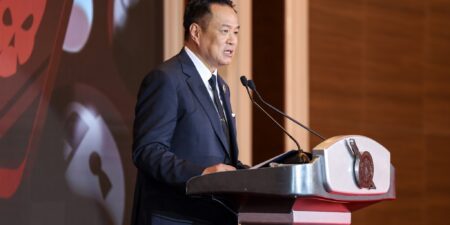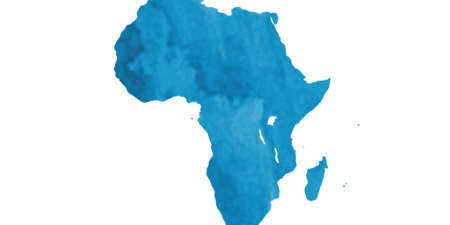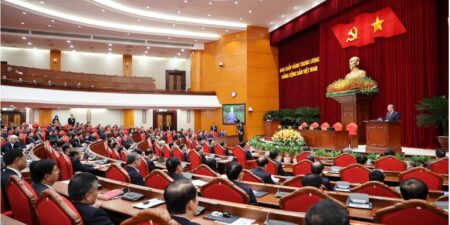
Health Care Innovation: Building Resilient Systems for Tomorrow

WHAT YOU NEED TO KNOW
- U.S. tariffs have prompted affected countries to diversify export markets, reduce their own import duties and pursue bilateral negotiations with Washington. Combined with China’s volume-based procurement policies, these shifts are pushing Indo-Pacific medical cost inflation to a record 12.3 percent in 2025.
- U.S. President Donald Trump issued an executive order directing drugmakers to cut U.S. prices to “most-favored-nation” levels. The order encourages bypassing intermediaries via direct-to-consumer models but lacks implementation details.
- African health systems are confronting a dual crisis of funding and rising demand. Development aid has dropped roughly 70 percent since 2021, and debt service obligations are set to hit $81 billion in 2025. The U.S. aid freeze in January paused U.S. President’s Emergency Plan for AIDS Relief and major HIV, tuberculosis and malaria programs, leaving many countries well short of their health-spending targets.
- With billions in revenue at stake from upcoming patent expirations, pharmaceutical firms are pivoting from capital-intensive, long-cycle research and development to bolt-on acquisitions to quickly replenish pipelines and reduce development risk.
- Mounting pricing pressure is accelerating the shift toward value-based contracts and lower list prices, tightening margins and requiring greater transparency across the board.
ON THE HORIZON
- The Indo-Pacific is accelerating digital health integration, embedding telemedicine and artificial intelligence (AI) into care through public-private partnerships. In Africa, mobile health and AI tools are being scaled back by World Health Organization and U.N. connectivity efforts.
- Medical supply chains are shifting for resilience. Southeast Asian countries are prioritizing supply security in their talks while “friend-shoring” deals for vaccines and devices multiply. Under the African Continental Free Trade Area, 61 percent of packaged medicines are still imported, but harmonization aims to expand regional manufacturing.
- Universal health coverage is gaining ground. Morocco, Ghana and Kenya are scaling insurance schemes, mirroring efforts in Thailand and India. With financing gaps persisting, the forecast period may bring targeted taxes, diaspora bonds and blended-finance models.
Sector Overview and Forecast
Macrotrend Monitor
Reshaping Global Health Care Amid Rising Costs, Geopolitical Strain and Fiscal Retrenchment
Health care systems worldwide are confronting a renewed wave of cost inflation. Medical expenses remain elevated, particularly in the Indo-Pacific, where a 12.3 percent increase is projected this year. This is driven by aging populations and the proliferation of high-cost therapies. Although pharmaceutical price inflation appears relatively contained, the introduction of novel treatments, such as cell and gene therapies, continues to exert upward pressure on drug budgets globally.
Persistent supply chain vulnerabilities are reinforcing the urgency of resilience strategies. The confluence of geopolitical instability, climate-related disasters and cybersecurity threats has compelled health care providers and manufacturers to diversify sourcing and stockpile critical items. The COVID-19 pandemic exposed how swiftly countries can impose export restrictions on essential supplies, a risk that remains. Logistics constraints, including port congestion and rising freight costs, pose particular challenges for island and landlocked health systems in the Indo-Pacific and Africa.
Protectionist trade policies are redrawing the map of global health care supply chains. The United States has instituted a broad 10 percent tariff on most imports, with steeper rates targeting strategic sectors. Medical devices have been particularly affected, with nearly 70 percent of U.S. devices rely on foreign manufacturing. Although tariffs have not been imposed on medicines for now, a proposed 25 percent U.S. tariff on imported pharmaceuticals could easily add as much as $51 billion to annual health care costs. Many manufacturers remain deeply tied to Chinese production, and abrupt cost spikes have prompted renewed pledges to reshore operations. However, these shifts would involve significant capital investment — expenses that would inevitably be passed on to patients through higher prescription prices, intensifying affordability challenges.
To navigate the turbulence, health care companies must fortify supply chains, manage financial exposure and engage in strategic policy dialogue. Standardizing product categories, diversifying vendor relationships and centralizing contract oversight can bolster supply security and pricing leverage. Adopting modern supply analytics enables more agile, data-driven decisions. Financially, health care systems must forecast more holistically — aligning labor and operational costs with dynamic supply needs. Subscription and cloud-based platforms offer cost flexibility and technological adaptability without heavy upfront investments. On the advocacy front, securing tariff exemptions for critical goods and collaborating with trade associations can help shape more favorable regulatory outcomes.
Though new trade barriers pose significant operational and financial hurdles, they also prompt a long overdue reevaluation of health care delivery models. Organizations that streamline operations, reduce waste and build durable supply chains will emerge stronger. By prioritizing resilience, fiscal discipline and policy engagement, health care systems can weather trade volatility and prepare for a more self-reliant future.
Meanwhile, a global wave of patent expirations is set to reshape pharmaceutical markets from 2025-2026. Drugs representing more than $250 billion in combined sales are poised to lose exclusivity, opening the door to generics and biosimilars. Specialty biologics — including oncology and osteoporosis treatments — are especially exposed, with competitive pressures mounting in both developed and emerging markets. Governments are recalibrating procurement strategies to capture savings, from India’s scaled-up bulk purchasing to South Africa’s tender reforms. Pharmaceutical research and development is already shifting in response as post-patent price erosion accelerates, companies are channeling investment into next-generation therapies and digital health platforms.
Drug price regulation is tightening globally, with public payers demanding greater value. In the United States, the Inflation Reduction Act’s Medicare negotiations — set to begin in 2026 — signal a significant shift in pricing authority. An executive order further critiques the structural disadvantages for small-molecule drugs. Across Europe and Asia, similar trends are unfolding. Japan’s biennial price reviews and Australia’s funding reforms reflect broader cost-containment momentum. Some proposals, such as tying U.S. drug prices to the lowest Organization for Economic Co-operation and Development benchmarks, could lead to pricing recalibrations in other markets. While manufacturers face mounting pressure, premium pricing may still be achievable in select Asian and African markets, preserving some headroom for innovation.
U.S. President Trump’s latest executive order intensifies pressure on drug pricing, mandating that U.S. prices match those in other advanced economies within 30 days. Focused on Medicare and Medicaid, the policy also promotes direct-to-patient sales, aiming to bypass traditional intermediaries. While the order signals a bold shift, its vague implementation framework and expected legal challenges echo past setbacks, tempering market reactions. The move may reshape long-term health care spending trajectories, although near-term disruptions appear limited amid persistent regulatory and judicial uncertainty.
Finally, international aid retrenchment is straining public health infrastructure in low-income countries. The U.S. aid freeze early this year suspended nearly 42 percent of health assistance to Africa. Other donors, such as the European Union and the United Kingdom, are also redirecting funds amid competing domestic needs. The resulting shortfall is most acute in infectious disease programs and immunization campaigns, risking hard-won public health gains. In response, African governments are increasingly turning to sovereign health funds and multilateral loans. To safeguard progress toward health-related goals, ministries must expand domestic revenue collection, enhance insurance coverage and forge more balanced co-financing partnerships with global health agencies.
Subsector Highlight
Tariff Pressures on the Medical Device Industry
While most pharmaceuticals benefit from World Trade Organization exemptions under the Pharma Agreement, the medical device sector has not enjoyed the same protections, and the consequences are mounting. The imposition of punitive tariffs on medical devices and their critical components has disrupted global supply chains, driven up costs and strained health care budgets at a time of rising demand.
In a surprise turn, Washington and Beijing agreed to a 90-day tariff truce, dialing back peak rates from 145 percent to 30 percent on U.S. imports from China and from 125 percent to 10 percent on Chinese imports from the United States. The rollback covers a broad range of goods, including medical devices and components, offering short-term cost relief for manufacturers. However, with 30 percent tariffs still in place and no structural resolution in sight, the reprieve feels more like a pause than a pivot. Many firms that have already begun diversifying supply chains are unlikely to reverse course based on a temporary detente.
If trade tensions escalate and higher tariffs are reimposed, the health care sector will come under renewed strain. The U.S. tariff on diagnostic and surgical equipment imported from China — covering high-value items such as MRI machines, ultrasound devices and precision surgical tools — has significantly increased input costs for manufacturers. These higher costs cascade through the supply chain, ultimately placing a burden on hospitals, health systems and patients. This adds further financial stress for providers already operating within narrow margins, especially in lower-income markets where substitution or rationing may compromise care quality.
Further up the production chain, a duty on key raw materials — including semiconductors, plastics and titanium — has disrupted the manufacturing of pacemakers, orthopedic implants and smart devices. These tariffs are particularly problematic, given that more than half of medical devices depend on semiconductor components. For instance, Taiwanese chipmakers face a 32 percent tariff, which could be reimposed after Trump’s 90-day pause, substantially raising the cost of high-tech assemblies. The combined impact is striking, U.S. imports of medical devices — valued at approximately $37.7 billion annually — are highly exposed to Chinese content, whether directly shipped or embedded in multijurisdictional supply chains via countries such as Malaysia and Mexico.
Manufacturers are responding with a combination of cost pass-throughs and strategic realignments. Analysts report price increases of 10-30 percent across selected product categories, and companies are actively exploring lower-tariff assembly hubs in Southeast Asia and Latin America. Design changes — such as substituting components or simplifying devices — are becoming more common. Even industry leaders are affected. Johnson & Johnson, for example, has cited a $400 million “tariff headwind” to its medtech division, prompting reductions in research and development budgets and investment planning.
At the health system level, capital expenditures are increasingly under pressure. In high-cost markets, procurement of large-scale medical technologies is being delayed. In Africa, where more than 90 percent of devices are imported, the situation is more acute. Tariff-induced price hikes are compounded by currency depreciation and transport surcharges. Hospitals are responding by shifting toward cost-effective, off-patent equipment and exploring bulk purchasing or pooled tenders to maintain affordability. Strategic stockpiling of critical care tools — such as ventilators and diagnostic analyzers — is growing. Meanwhile, governments in countries like Egypt and South Africa are investing in local assembly ventures to build resilience against future shocks.
The broader industry implications are no less significant. Trade tensions are pushing medtech firms to rethink global research and development footprints, with some relocating clinical trials and modular manufacturing to more flexible innovation hubs in emerging markets. At the same time, Indo-Pacific powers such as Japan and Korea are increasing domestic subsidies to maintain competitive advantage. In Africa, the innovation ecosystem remains underdeveloped due to regulatory and infrastructure constraints. But this also presents an opportunity: global players are beginning to form partnerships with local distributors and policymakers, who are increasingly using public procurement as a lever to stimulate industrial development — mirroring South Africa’s earlier efforts in generics manufacturing. Looking ahead, the medical device market is likely to experience slower refresh cycles, as price-sensitive customers delay upgrades and prioritize digital health tools that bypass physical tariffs. Devices that incorporate cloud-based diagnostics, AI-driven monitoring and remote care — particularly in underserved regions — may define the next frontier. For now, however, tariff-driven disruption is reshaping everything from sourcing and pricing to innovation and access.
We will continue to keep you updated on developments in the health care sector as they occur. If you have comments or questions, please contact BGA Director Yeh Cher Low at clow@bowergroupasia.com.
Best regards,
BGA Health Care Team

Yeh Cher Low
Director

Subscribe to Asia Street
Insights & News


An Early Election Looms in Unsettled Thailand
BGA Senior Adviser Thitinan Pongsudhirak wrote an update to clients on Thailand’s political environment. Thailand’s …
 Dr. Thitinan Pongsudhirak
Dr. Thitinan Pongsudhirak

Africa’s Expanding Economic Ties With the Indo-Pacific
Africa’s economic engagement with Indo-Pacific countries has significantly expanded over the past decade — shifting …
 Murray Hiebert
Murray Hiebert

Vietnam Communist Party Makes Critical Personnel Decisions Ahead of National Congress
The BGA Vietnam Team, led by Managing Director Nguyen Viet Ha, wrote an update on …
 Nguyen Viet Ha
Nguyen Viet Ha
At BowerGroupAsia, we are committed to
delivering result-oriented solutions for our clients
We have proven track record of helping the world’s top companies seize opportunities and manage challenges across the dynamic Indo-Pacific region.















